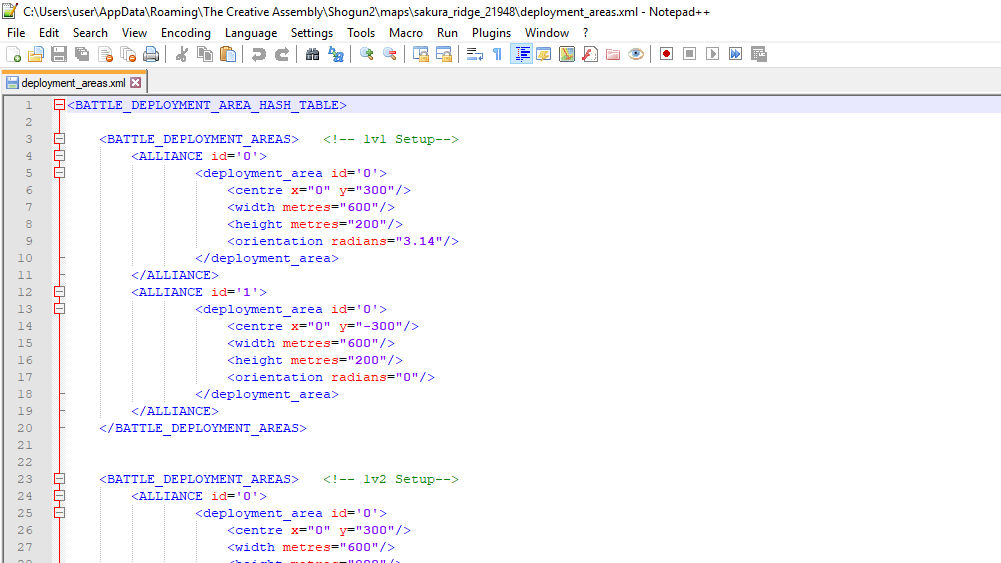- Sakura Ridge
Level design for Total War is a unique challenge, the usual design beats for an RTS game do not apply. These are the key requirements of battle design :
- Terrain height conveys a combat advantage at the man level.
- Armies move in formation and need space. Choke-points reduce battles to a mosh-pit
- Trees are required provide options for hidden movement and to cause uncertainty in the mind of your opponent.
- Obstructions force the player to make decisions and commit their troops to one side or the other.
Design
It’s common in multi-player battles for previous Total War games for players to play negatively. The design of the battles means that passive-aggressive counter-punching strategies are more effective, so players would hold their deployment zone and edge out.
Sakura Ridge was designed with a simple principle in mind – the player must start from a position of weakness so they are encouraged to push forward and become active in the battle. Any kind of risk-averse strategy is weakened by the disadvantage of conceding the high ground.
This idea was a key principle for several of my battles, but with Sakura Ridge it was pushed to the extreme. I placed a ridge between the players that dominated the battlefield, I then added tactical options to the sides so that it wouldn’t be a simple rush to the top.
Tools
Sakura Ridge is built using the Creative Assembly’s proprietary Terrain Editor (TEd) for Total War, and manually editing xml files. It was built with assets created by the art team and given a final art pass by the Lead Artist.

At the time Sakura Ridge was create TEd was in alpha, many features were missing or not working. An example of this was the deployment zones file which defines the deployment areas for every permutation of X vs Y player count. This file had to be manually created in an Xml editor.